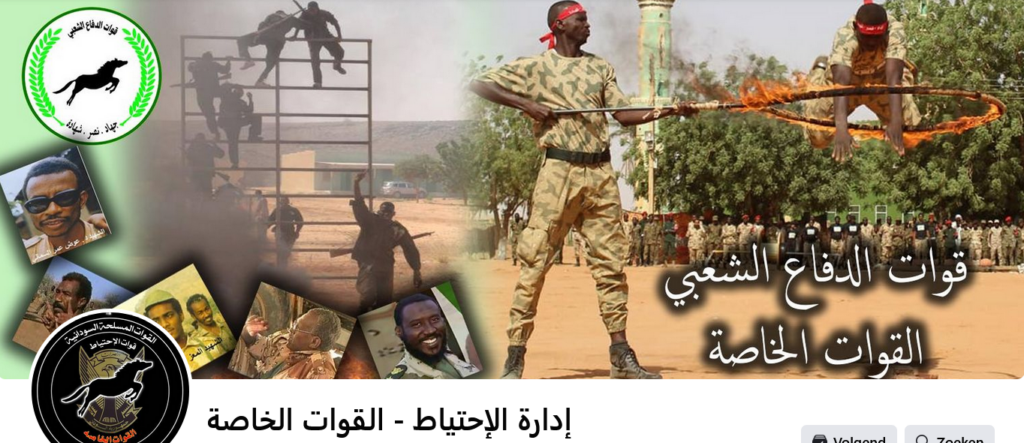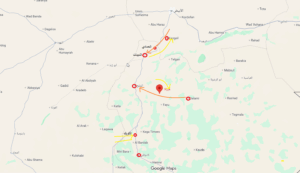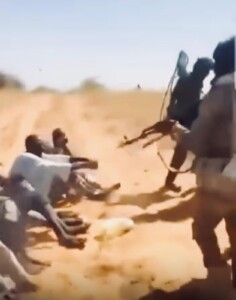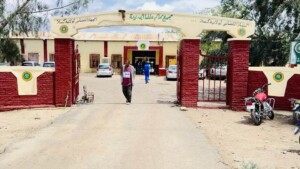Unravelling Sudan’s militia matrix: PRF and other emerging forces

Screenshot of a Facebook page of the Reserve Department-Sudan Special Forces
In Sudan’s intricate political and military arena, new and established actors continually surface, raising concerns over a prolonged conflict. A new group, the Sudanese Popular Resistance Factions (PRF), announced its aim to “liberate Khartoum” from the Rapid Support Forces (RSF). Another prominent player, El Baraa Ibn Malik Brigade, gained attention through its active role in battles.
Over the past few weeks, the new PRF rapidly gained an online following and has been publishing videos filmed near the frontline in Omdurman, as reported by Sudan War Monitor.
In their most recent video released on September 18, titled “Statement Number 1”, masked gunmen present the group’s objective to “liberate Khartoum and cleanse it of the filth of these [RSF] mercenaries”.
Notably, the group’s name echoes that of the resistance committees, which played a pivotal role in the 2018-2019 revolution that ousted President Omar Al Bashir. “However, unlike those committees, this group espouses violence rather than non-violence and emerged not from the grassroots but from the shadows,” Sudan War Monitor stated.
Brigade
“In the ever-evolving landscape of Sudan’s complex political and military scene, new and longstanding players continue to emerge, contributing to a growing sense of unease regarding the possibility of prolonged conflict,” the pan-Arab media outlet Alaraby stated on July 17.
One such group that came to the forefront is El Baraa Ibn Malik Brigade, named after a famous Muslim combatant during early Muslim conquests. The brigade made appearances in numerous video clips, depicting its active participation, and supporting the army in its ongoing battles against the RSF. Allegations surfaced on social media platforms, with supporters of the RSF suggesting that this brigade consists of remnants of the Al Bashir regime.
Alaraby‘s open-source investigations unit launched a comprehensive inquiry into the group, and found a connection between El Baraa Ibn Malik Brigade and the army’s reserve department that took up many paramilitaries of the Popular Defence Forces (PDF*) within its Special Forces, after the militia was dissolved by the Hamdok government in mid-2020.
The involvement of El Baraa Ibn Malik Brigade alongside the Sudan Armed Forces (SAF) is not a recent development. Alaraby‘s team identified a video clip published on April 15, the day war broke out between the SAF and the RSF in Khartoum.
The video, posted on the Facebook page of the Reserve Department-Sudan Special Forces, prominently displays the brigade’s logo, with its members expressing their readiness to confront the RSF. On July 4, another video circulated, showcasing the brigade’s forces and those of other popular battalions gathering in support of the Sudanese army.
Ties to the Al Bashir regime
During their investigation, the Alaraby team came across several names related with the Al Bashir regime, “including El Misbah Abuzeid, Anas Omar, and Huzeifa Istanbul”. Abuzeid was identified as one of El Bara Bin Malik’s field commanders, operating under the command of former PDF leaders. Istanbul is the registered contact for the brigade.
Omar was a prominent figure within the dissolved National Congress Party (NCP) of President Al Bashir and was detained by the RSF on May 16.
In pursuit of this lead, Alaraby‘s team examined social media platforms related to the El Bara Bin Malik Brigade. On the NCP’s homepage, the team found they had shared several videos in support of the brigade. “This association strengthens the hypothesis that the brigade may have been operating within the NCP’s framework”, Alaraby wrote.
Nevertheless, the news outlet warns that “the appearance of El Baraa Ibn Malik’s name online has been the subject of fabricated posts and misleading claims by supporters of the RSF”.
Other groups
As reported by Radio Dabanga at the beginning of April, Retd Navy Lt Col Omar Arbab previously accused the Sudanese army of involvement in the formation of new militias, such as the Homeland Shield Forces and the Sudan Entity Forces.
The creation of the Sudan Shield Forces (SSF) in El Butana in eastern Sudan’s El Gedaref prompted numerous inquiries regarding the group’s origins, timing, and sources of support. During a gathering to showcase the forces on December 17, Abu Agla Keikel, the leader of SSF and a former Sudanese army officer, openly voiced his opposition to the Juba Peace Agreement.
On November 13 last year, a group of retired army officers convened a press conference in Khartoum to formally announce the establishment of an armed movement known as the Homeland Entity.
El Sawarmi Saad, a former Sudanese army spokesperson and the military commander of the group, articulated their objectives as “to revoke the Juba Peace Agreement and safeguard the interests of the populace spanning from the Red Sea to Kordofan in the broader central Sudan region”.
Both El Butana group and Homeland Entity, in addition to their calls for the termination of the Juba agreement, share a common stance towards the Sudanese army: they do not view themselves as adversaries of the army.
Nevertheless, military analysts caution against such militias, as they often begin as supporters of the army but may eventually pursue their own agendas, potentially becoming sources of instability, as Sudan Tribune reported.
* The paramilitary Popular Defence Forces (PDF) was established after Omar El Bashir took power in a military coup in June 1989, and defined as a semi-military force of Sudanese citizens. Members received training, uniforms, weapons, and food, but no salaries. The PDF played a major role in the distribution of weapons to, and military training for, tribal militias. It also operated as a reserve force for the Sudan Armed Forces (SAF). After the ousting of President Al Bashir in April 2019, the PDF remained operational, in particular in South Kordofan, until early June 2020, when the militia was officially dissolved.











 and then
and then